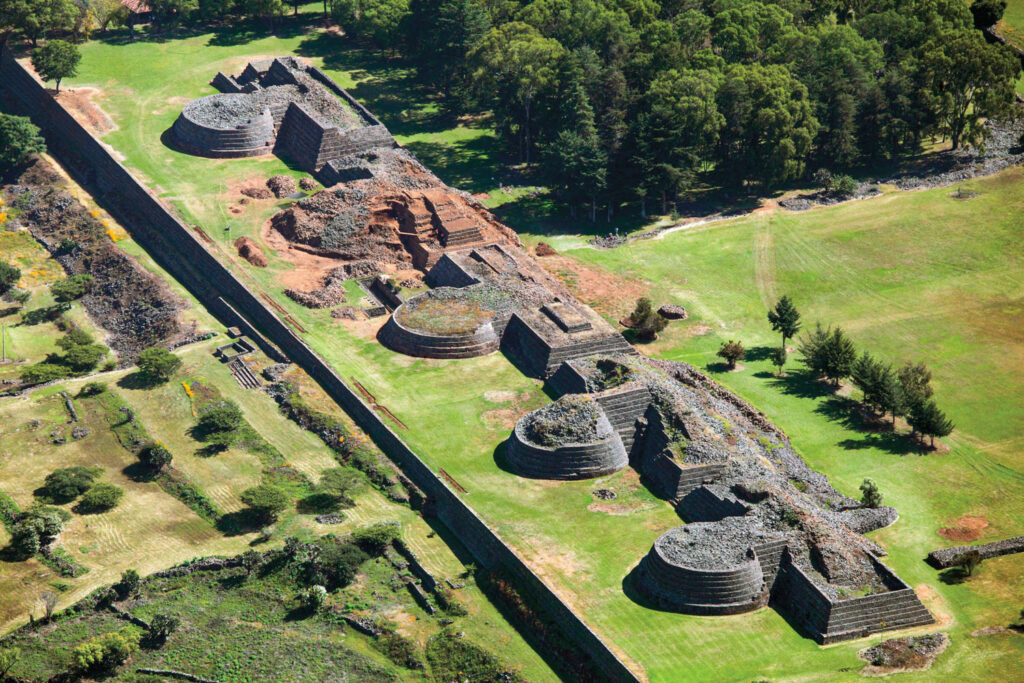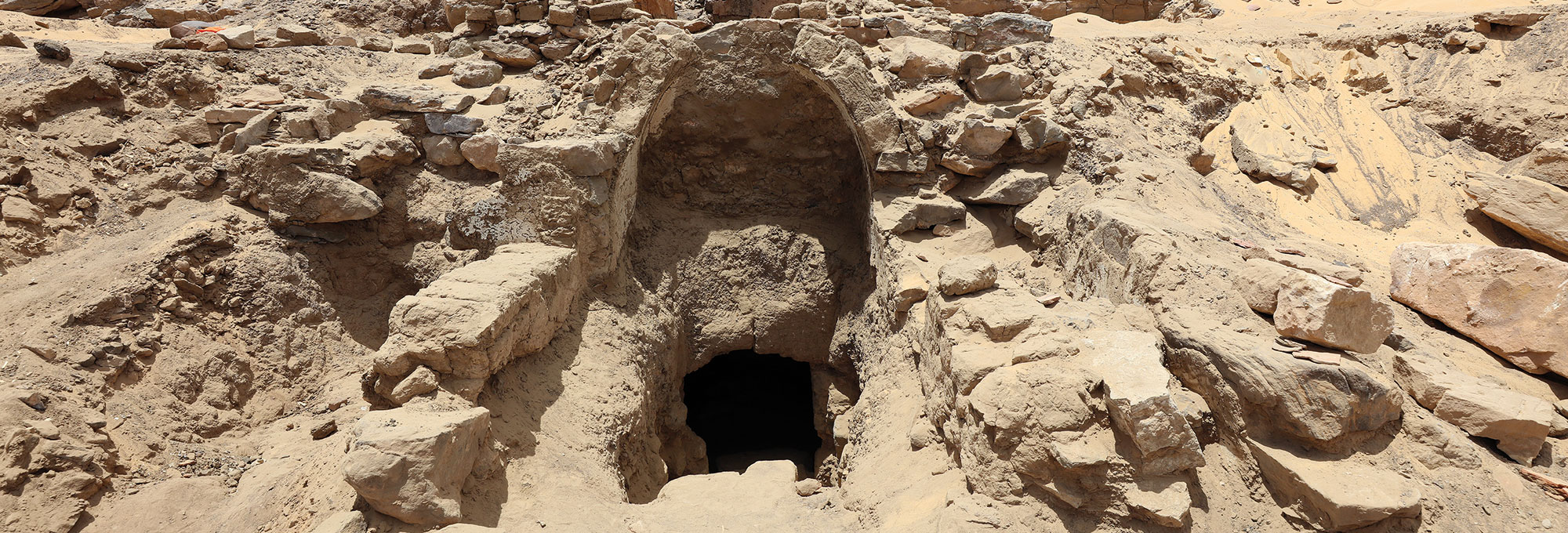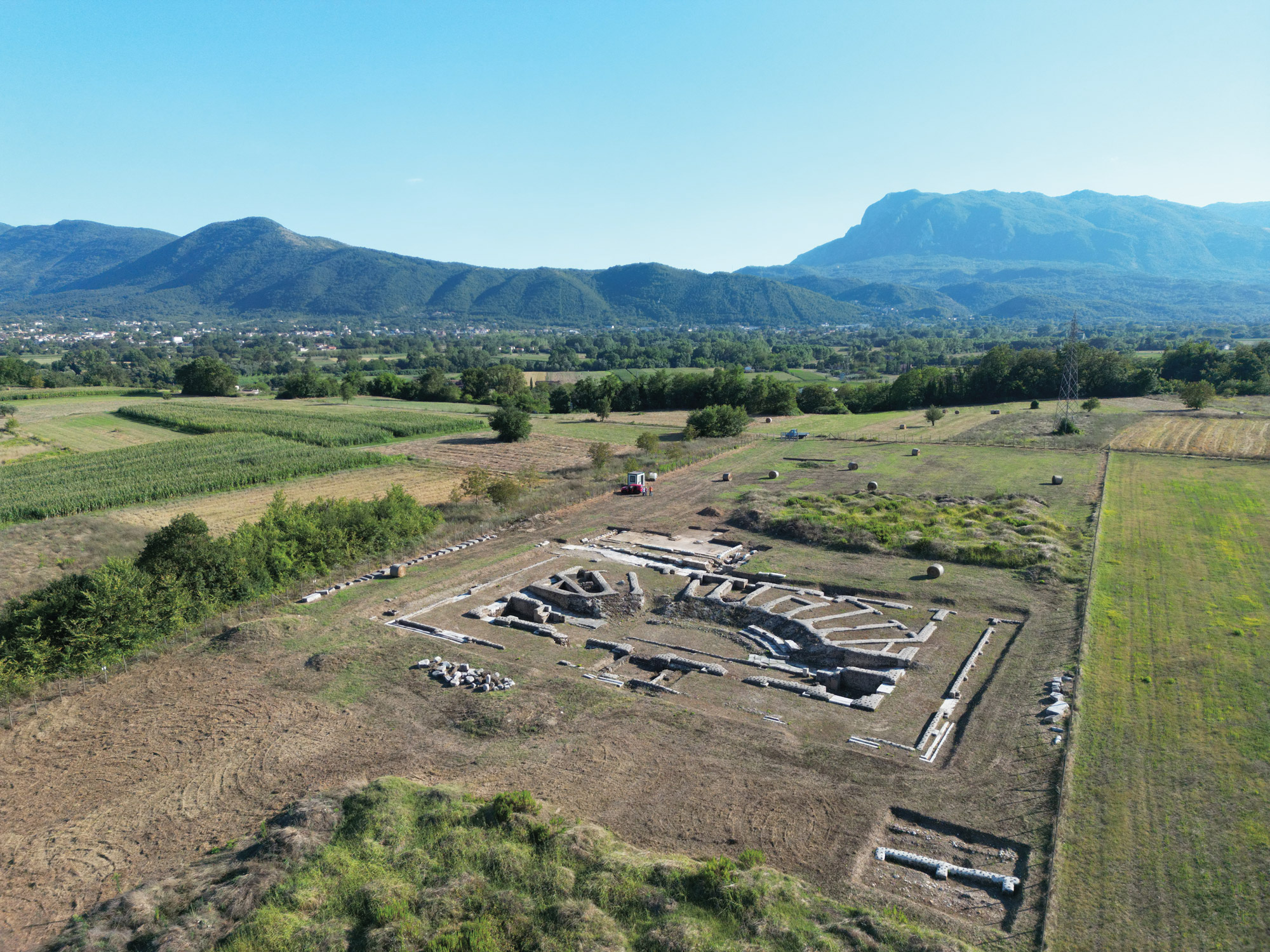
A majestic row of five circular pyramids known as yácatas dominates a promontory overlooking Lake Pátzcuaro in the western Mexican state of Michoacán. Embodying the former might of the Purépecha Empire, which flourished from around 1350 to 1530, the pyramids rise in the center of the imperial capital of Tzintzuntzan, or “place of the hummingbirds” in Purépecha, a language still spoken by more than 100,000 people in Michoacán. Known as the Tarascan Empire to the Spanish, the state was a fierce rival of the Aztecs to the east and brought a diverse group of Mesoamerican peoples under the rule of a single monarch.

Tzintzuntzan covered more than 1,500 acres and was home to some 30,000 people when the Spanish arrived in 1522. Unlike the Aztecs, the Purépecha submitted to Spanish rule without resistance. This did not, however, prevent the Spaniards from executing the last Purépecha ruler, Tangaxuan II (reigned 1520–1530), who was burned at the stake despite having converted to Christianity. Between 1539 and 1541, a Franciscan friar worked with Purépecha nobles at Tzintzuntzan to create an illustrated chronicle of the empire known as La Relación de Michoacán. Archaeologist Anna Cohen of Florida State University says that, in addition to recording Purépecha history, the chronicle offers a vivid look at rituals associated with the yácatas of Tzintzuntzan. “There are images of perishable structures on top of the pyramids where elites likely consumed cacao and practiced human sacrifice,” says Cohen. She notes that the yácatas probably played an important role in how Purépecha kings collected tribute from their subjects. “They would have used these pyramids to demonstrate their might and political authority,” Cohen says. “They showed everyone how the king could co-opt labor and bring people together to build structures in the name of the empire.”
THE SITE
Today, the monumental core of Tzintzuntzan is a protected archaeological zone featuring a museum that houses artifacts excavated from graves at the base of the pyramids. Many of these objects, such as copper bells and tweezers, showcase one of Mesoamerica’s most sophisticated metallurgical traditions. “The Purépecha were known in Mesoamerica for their metalworking,” says Cohen, “and these grave goods really helped archaeologists define Purépecha material culture.” The archaeological park also includes a 27-acre ceremonial plaza and an immense royal palace built into a hill that are both accessible to visitors. Each year between Christmas and New Year’s Day, the site hosts a popular festival. The event showcases traditional Purépecha dances and uarukua, a Purépecha ball game similar to field hockey.

WHILE YOU'RE THERE
Housed in an eighteenth-century mansion, the State Museum of Michoacán in the capital city of Morelia has a number of Purépecha artifacts on display. The site of Ihuatzio, which is eight miles south of Tzintzuntzan, is another important Purépecha city open to visitors. Two small square pyramids there offer an interesting contrast to the five yácatas that stand at Tzintzuntzan. Cohen recommends taking a ferry to Lake Pátzcuaro’s island of Janitzio—which is famous for its elaborate Day of the Dead processions—and ordering the fried fish dish charales. The city of Pátzcuaro, on the lake’s southern shore, makes a good base for a trip to the area. Filled with elegant sixteenth- and seventeenth-century architecture, Pátzcuaro dates to the days of the Purépecha Empire, when a pyramid once rose above the city.











